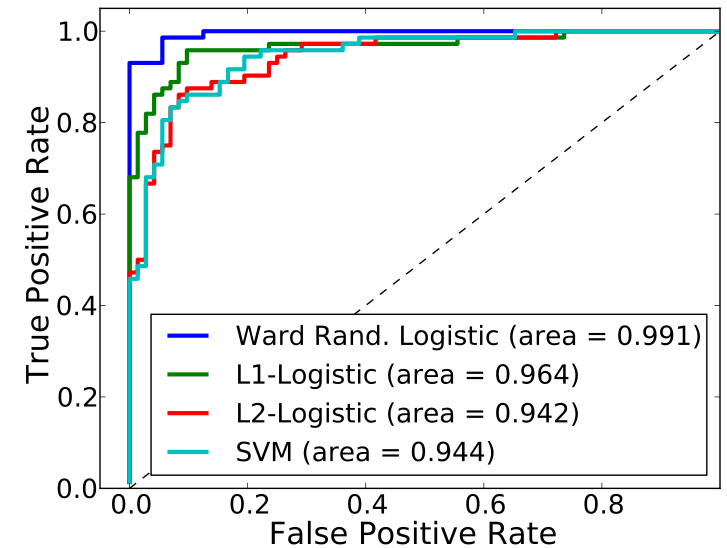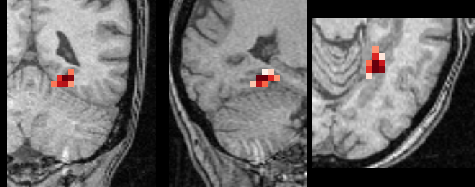Section: New Results
Beyond brain reading: identify and predict with clustering and randomized sparsity
The prediction of behavioral covariates from functional MRI (fMRI) is known as brain reading. From a statistical standpoint, this challenge is a supervised learning task. The ability to predict cognitive states from new data gives a model selection criterion: prediction accuracy. While a good prediction score implies that some of the voxels used by the classifier are relevant, one cannot state that these voxels form the brain regions involved in the cognitive task. The best predictive model may have selected by chance non-informative regions, and neglected relevant regions providing duplicate information. In this contribution, we address the support identification problem. The proposed approach relies on randomization techniques which have been proved to be consistent for support recovery. To account for the spatial correlations between voxels, our approach makes use of a spatially constrained hierarchical clustering algorithm. Results are provided on simulations and a visual experiment. See Fig. 9 .




